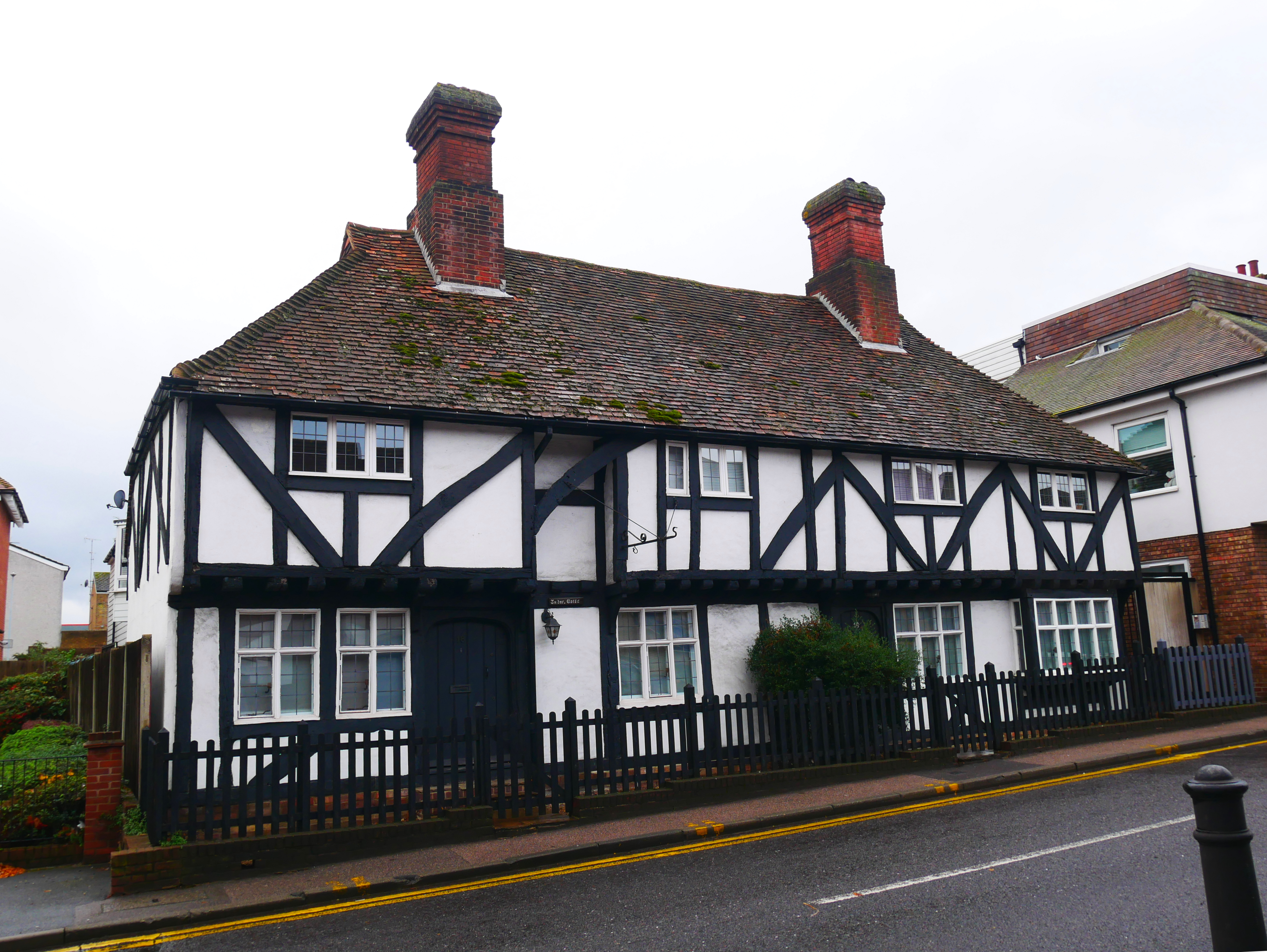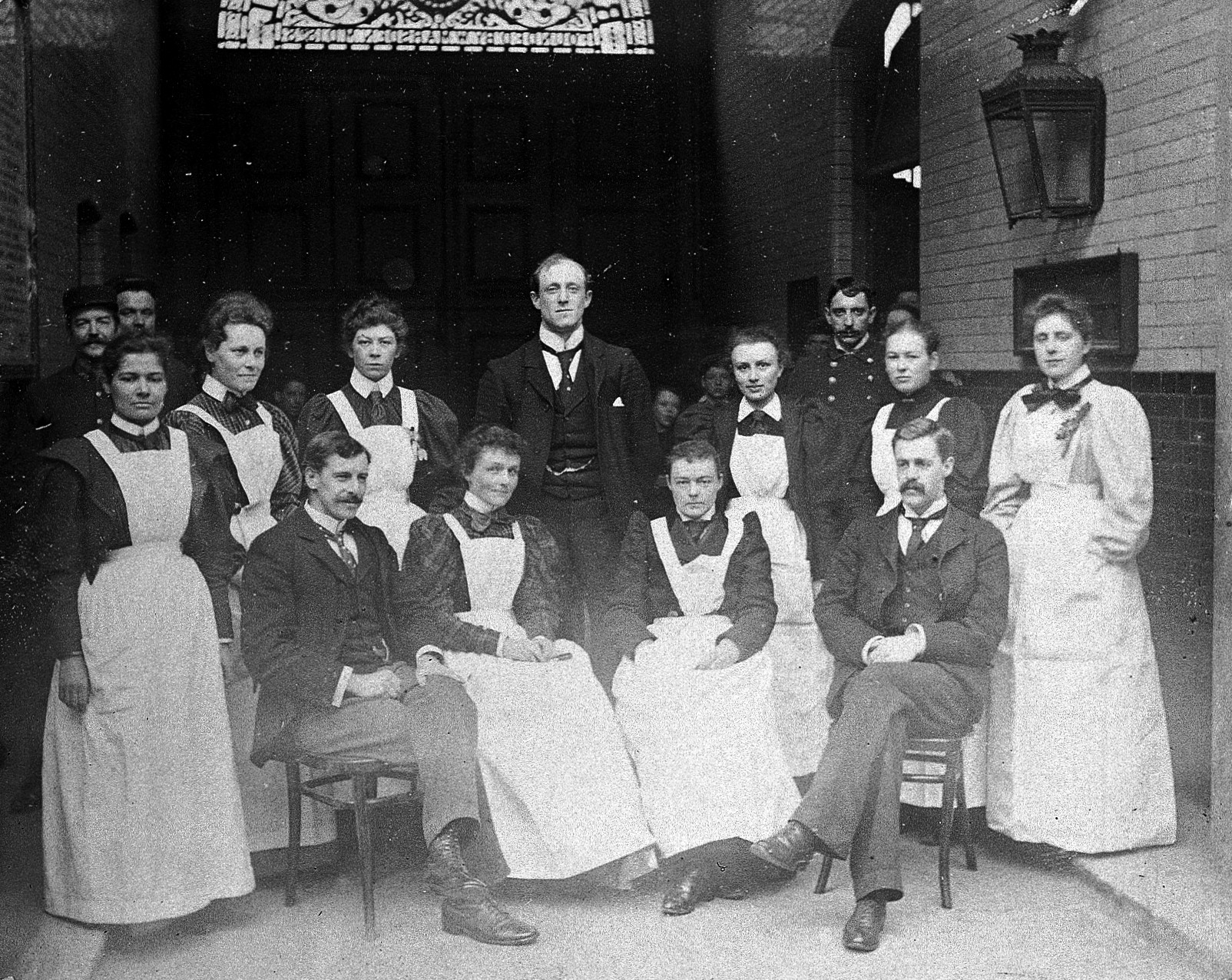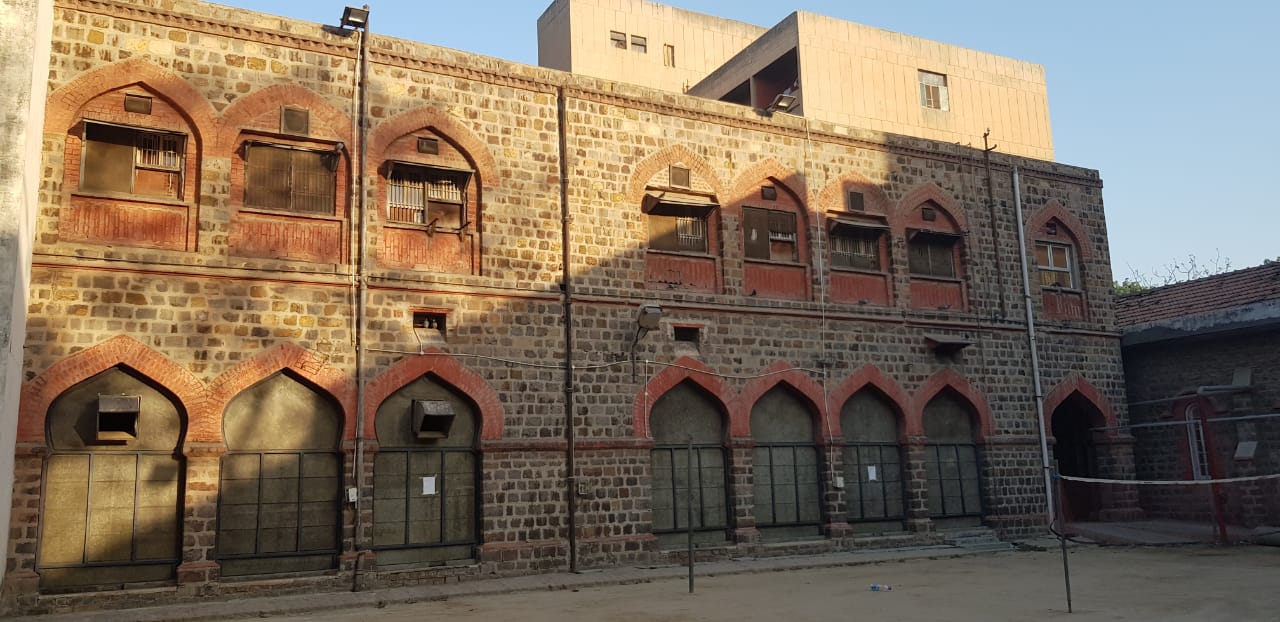|
Ivy Evelyn Woodward
Ivy Evelyn Haslam M.D. MRCP (née Woodward; 30 May 1877–11 January 1957) was a British medical practitioner. In 1909, she became the first female member of the Royal College of Physicians (RCP). Born in Kent, the eldest of six children, Woodward was educated in Bromley before studying medicine at the London School of Medicine for Women. After gaining her membership in the RCP in 1909, she continued posts at the Royal Free Hospital, including assistant pathologist. In 1915, she became a Fellow of the Royal Society of Medicine. Her last known appointment was as a clinical assistant, Children’s Outpatient Department, West London Hospital. Woodward married surgeon Arthur Charles Haslam and they had five children. In 2018, she was featured in the RCP exhibition "This Vexed Question: 500 years of women in medicine". Early life and education Ivy Evelyn Woodward was born on 30 May 1877 in Foots Cray, Kent. Her parents were Elizabeth Woodward (née Addis) (1854–1932), born in Ply ... [...More Info...] [...Related Items...] OR: [Wikipedia] [Google] [Baidu] |
Foots Cray
Foots Cray is an area of South East London, England, within the London Borough of Bexley, Greater London. Prior to 1965 it was in the historic county of Kent. It is located south-east of Sidcup. History It took its name from Godwin Fot, a local Saxon landowner recorded in the Domesday Book of 1086, and from the River Cray that passes through the village. It lay on the old Maidstone Road (now bypassed by the A20 road) leading from London to north Kent. Until the 20th century, Foots Cray dominated the nearby, less ancient hill-top hamlet of Sidcup. The combined area was designated as the Urban District of Foots Cray in 1902. Soon, however, the two settlements' fortunes were reversed, as Foots Cray's traditional industries declined after the First World War, and Sidcup grew rapidly as a commuter town after a railway was built linking it to central London. In 1921 this change was reflected in the renaming of Foots Cray Urban District to Sidcup Urban District. In 1965 both areas ... [...More Info...] [...Related Items...] OR: [Wikipedia] [Google] [Baidu] |
Medical Women's Federation
The Medical Women's Federation is the largest UK body of women doctors. The organisation is dedicated to the advancement of the personal and professional development of women in medicine and to improving the health of women and their families in society. It was founded in 1917, and its headquarters are located in Tavistock Square, London. Origins The Medical Women's Foundation built upon the Association of Registered Medical Women, which had been founded in London in 1879 with the intention that it would 'speak on behalf of all medical women and represent their interests.' Nine members comprised the original association, though other provincial associations and members rapidly followed as more women became qualified in medicine. Representatives of these associations came together in 1916 to discuss the benefits of establishing a Federation. This meeting was in part stimulated by the Government's dismissive attitude towards women doctors who wished to serve in the First World Wa ... [...More Info...] [...Related Items...] OR: [Wikipedia] [Google] [Baidu] |
People From Sidcup
A person ( : people) is a being that has certain capacities or attributes such as reason, morality, consciousness or self-consciousness, and being a part of a culturally established form of social relations such as kinship, ownership of property, or legal responsibility. The defining features of personhood and, consequently, what makes a person count as a person, differ widely among cultures and contexts. In addition to the question of personhood, of what makes a being count as a person to begin with, there are further questions about personal identity and self: both about what makes any particular person that particular person instead of another, and about what makes a person at one time the same person as they were or will be at another time despite any intervening changes. The plural form "people" is often used to refer to an entire nation or ethnic group (as in "a people"), and this was the original meaning of the word; it subsequently acquired its use as a plural form of p ... [...More Info...] [...Related Items...] OR: [Wikipedia] [Google] [Baidu] |
Members Of The Royal College Of Physicians
Member may refer to: * Military jury, referred to as "Members" in military jargon * Element (mathematics), an object that belongs to a mathematical set * In object-oriented programming, a member of a class ** Field (computer science), entries in a database ** Member variable, a variable that is associated with a specific object * Limb (anatomy), an appendage of the human or animal body ** Euphemism for penis * Structural component of a truss, connected by nodes * User (computing), a person making use of a computing service, especially on the Internet * Member (geology), a component of a geological formation * Member of parliament * The Members, a British punk rock band * Meronymy, a semantic relationship in linguistics * Church membership, belonging to a local Christian congregation, a Christian denomination and the universal Church * Member, a participant in a club or learned society A learned society (; also learned academy, scholarly society, or academic association) is a ... [...More Info...] [...Related Items...] OR: [Wikipedia] [Google] [Baidu] |
1957 Deaths
1957 ( MCMLVII) was a common year starting on Tuesday of the Gregorian calendar, the 1957th year of the Common Era (CE) and ''Anno Domini'' (AD) designations, the 957th year of the 2nd millennium, the 57th year of the 20th century, and the 8th year of the 1950s decade. Events January * January 1 – The Saarland joins West Germany. * January 3 – Hamilton Watch Company introduces the first electric watch. * January 5 – South African player Russell Endean becomes the first batsman to be dismissed for having ''handled the ball'', in Test cricket. * January 9 – British Prime Minister Anthony Eden resigns. * January 10 – Harold Macmillan becomes Prime Minister of the United Kingdom. * January 11 – The African Convention is founded in Dakar. * January 14 – Kripalu Maharaj is named fifth Jagadguru (world teacher), after giving seven days of speeches before 500 Hindu scholars. * January 15 – The film '' Throne of Blood'', Akira Kurosawa's reworking of ''Mac ... [...More Info...] [...Related Items...] OR: [Wikipedia] [Google] [Baidu] |
1877 Births
Events January–March * January 1 – Queen Victoria is proclaimed '' Empress of India'' by the '' Royal Titles Act 1876'', introduced by Benjamin Disraeli, the Prime Minister of the United Kingdom . * January 8 – Great Sioux War of 1876 – Battle of Wolf Mountain: Crazy Horse and his warriors fight their last battle with the United States Cavalry in Montana. * January 20 – The Conference of Constantinople ends, with Ottoman Turkey rejecting proposals of internal reform and Balkan provisions. * January 29 – The Satsuma Rebellion, a revolt of disaffected samurai in Japan, breaks out against the new imperial government; it lasts until September, when it is crushed by a professionally led army of draftees. * February 17 – Major General Charles George Gordon of the British Army is appointed Governor-General of the Sudan. * March – '' The Nineteenth Century'' magazine is founded in London. * March 2 – Compromise ... [...More Info...] [...Related Items...] OR: [Wikipedia] [Google] [Baidu] |
B24975977 0001/page/n3
B, or b, is the second letter of the Latin-script alphabet, used in the modern English alphabet, the alphabets of other western European languages and others worldwide. Its name in English is ''bee'' (pronounced ), plural ''bees''. It represents the voiced bilabial stop in many languages, including English. In some other languages, it is used to represent other bilabial consonants. History Old English was originally written in runes, whose equivalent letter was beorc , meaning "birch". Beorc dates to at least the 2nd-century Elder Futhark, which is now thought to have derived from the Old Italic alphabets' either directly or via Latin . The uncial and half-uncial introduced by the Gregorian and Irish missions gradually developed into the Insular scripts' . These Old English Latin alphabets supplanted the earlier runes, whose use was fully banned under King Canute in the early 11th century. The Norman Conquest popularised the Carolingian half-uncial forms which la ... [...More Info...] [...Related Items...] OR: [Wikipedia] [Google] [Baidu] |
Dossibai Patell
Dossibai Rustomji Cowasji Patell MBE, MRCP (16 October 1881 – 4 February 1960), later known as Dossibai Jehangir Ratenshaw Dadabhoy, was an Indian obstetrician and gynaecologist, who in 1910 became the first woman to become a member of the Royal College of Surgeons of England (RCS). After completing initial medical training in India, she spent six years in London studying for the MRCS (Eng), LRCP, MRCP, MB BS and finally MD. Upon return to India, she established a career in obstetrics and gynaecology, advocated maternal and child welfare centres and petitioned for reducing infant mortality. In this role, she became active in a variety of societies, becoming the president of first the Bombay Obstetric and Gynaecological Society and later of the Association of Medical Women in India. The Dossibai J. R. Dadabhoy oration is given in her memory. Early life Dossibai Patell was born on 16 October 1881 to a wealthy Parsi family and attended Miss Moos School for Girls in Bomba ... [...More Info...] [...Related Items...] OR: [Wikipedia] [Google] [Baidu] |
Royal College Of Surgeons
The Royal College of Surgeons is an ancient college (a form of corporation) established in England to regulate the activity of surgeons. Derivative organisations survive in many present and former members of the Commonwealth. These organisations are now also responsible for training surgeons and setting their examinations. History The earliest form of the Royal College of Surgeons was the "Guild of Surgeons Within the City of London" founded in the 14th century. There was dispute between the surgeons and barber surgeons until an agreement was signed between them in 1493, giving the fellowship of surgeons the power of incorporation. The Guild of Barbers of Dublin received a Royal Charter of Henry VI in 1446, making it the earliest Royal Medical incorporation in Britain or Ireland. This was followed in 1505 by the incorporation of the Barber Surgeons of Edinburgh as a Craft Guild of Edinburgh. This body was granted a royal charter in 1506 by King James IV of Scotland. It was follow ... [...More Info...] [...Related Items...] OR: [Wikipedia] [Google] [Baidu] |
St Stephen's Hospital
St Stephen's Hospital Delhi is one of the oldest and the largest private hospitals in New Delhi, India. The hospital today has 600 beds and is presently a superspeciality tertiary care hospital offering comprehensive care covering all major clinical specialities and most super-specialities. The institution started as a dispensary in 1876 by the Delhi Female Medical Mission, on the banks of river Yamuna. The hospital was later established in 1885 as a small facility with 50 beds in Chandni Chowk and opened by Lady Dufferin, Vicereine of India. It was the first hospital for women and children. Education St. Stephen's Hospital was the first one to begin training the Indian women as nurses in 1867. The training School for nurses was started under Alice Wilkinson—the first trained British nurse who joined the hospital in 1908. Wilkinson became the hospital's nursing superintendent. She also founded the Trained Nurse's Association of India and worked as its secretary until ... [...More Info...] [...Related Items...] OR: [Wikipedia] [Google] [Baidu] |
National Registration Act 1939
The National Registration Act 1939 was an Act of Parliament in the United Kingdom. The initial National Registration Bill was introduced to Parliament as an emergency measure at the start of the Second World War. The Act provided for the establishment of a constantly-maintained National Register of the civilian population of the United Kingdom and the Isle of Man, and for the issuance of identity cards based on data held in the register, and required civilians to present their identity cards on demand to police officers and other authorised persons. Following the passing of the Act by Parliament on 5 September 1939, registrations and the issuing of identity cards commenced on 29 September. Registration and identity cards Every man, woman and child had to carry an identity (ID) card at all times and the cards would include the following information: *Name *Sex *Date of birth (and thus age) *Occupation, profession, trade or employment. The Register had also collected informati ... [...More Info...] [...Related Items...] OR: [Wikipedia] [Google] [Baidu] |


_1938.jpg)



.png)